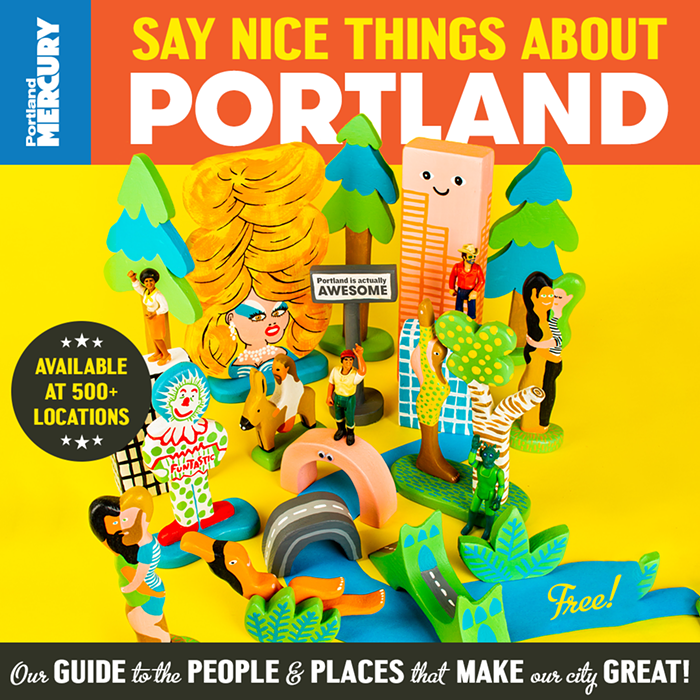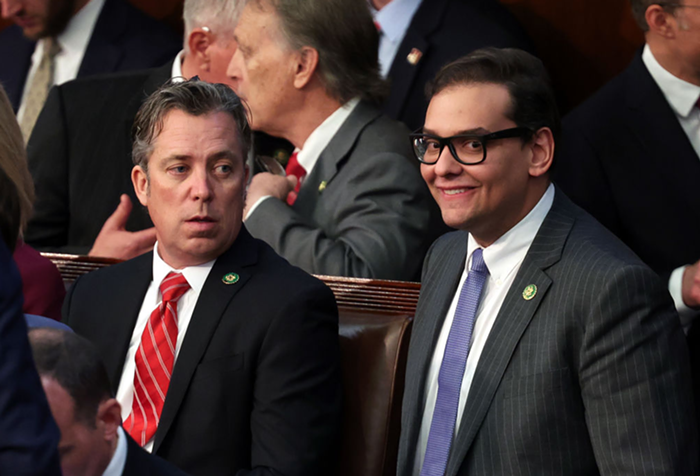THE LAST DECADE has been very good for Portland retail. An influx of stores offering a cosmopolitan, curated mix of up-and-coming designers have turned Portland into a tax-free shopping haven for enthusiasts from up and down the West Coast and beyond. Lately, however, there appears to be some renewed momentum on the vintage front, the area in which this city has always shined.
Jeffrey Kyle had quite a bit to do with that, as an original founder of Magpie and Glamour Gallery. More recently he's been on the team at the Portland Design Collective (PDC), and now he's branched off yet again to do his own thing, along with the PDC's former in-house designer/tailor, Jennifer Faust: Welcome to Funkytown, where flawed treasures that catch Kyle's eye are given new life through Faust's restoration skills, and their own in-house lines of jewelry (Beadnik) and apparel (JJ Joint) can flourish. I spoke to Kyle and Faust about what differentiates the new venture, their in-house design contributions, and why buying vintage and American-made is more important than ever. Funkytown, 4707 SE Hawthorne
MERCURY: How did the two of you arrive as partners in Funkytown?
JEFFREY KYLE: Jennifer and I are very close in age, and she was a fashion model in the '80s and '90s, while I was doing makeup in New York and here, and drag, and vintage. Both being of a certain age and having traveled through our lines of work, we've seen various kinds of clothing, vintage and otherwise, [and we both feel that] we don't really need to put any more junk on this planet. So we decided we're going to work with what we have.
Why open a brick 'n' mortar in this economic climate instead of opting for less overhead by remaining online?
KYLE: We're not that into the internet, where you can't really see things. And a lot of those internet people have priced their things so high that it's screwed with the market. There's something to be said for customer service and not just slapping the ultimate amount on something and waiting for some stranger to come by.
How do you characterize the vintage of Funkytown?
KYLE: We're not emphasizing the super precious, super high-end stuff. It's lovely, I appreciate it, but the store we found dictated what we should be doing with it. It looks like... Funkytown! So we decided it should be street level, prices included. I like the idea of picking out things that need work, but I don't want to overload Jennifer, because I don't sew! It's fun stuff, not serious high-end cocktail wear, but more party stuff, psychedelic stuff.
When it comes to vintage, how important is origin of manufacturing?
KYLE: Hugely! Except at a certain point in time, when things made in China were exported to us that we simply could not do, like extensive beading. I respect that far more so than some supposedly "American" designer who has everything made overseas. And it's destroyed our economy. My favorite stuff to collect these days are things made in the USA. The '80s era of these pieces are as good as anything from Italy. People have really lost the pride in workmanship here. We need to help the economy through buying vintage and made in USA.
Tell us about the Funkytown in-house designs, Beadnik jewelry and JJ Joint.
KYLE: My mom was a huge influence for everything I've ever done, which has always been directed at art, theater, and clothes. At age 10 my mom showed me how to make puka shell necklaces and fake pearl earrings. I didn't really get serious about it until I was about 20 and started using good glass beads. Now I make [wearable] puppets out of vintage beads. I like them to look like crib toys but more proportionate and chic. I like mine to have boobs and hips and rhinestone accessories—literally. And I name them all.
JENNIFER FAUST: I seem to have a fixation with lingerie and bathing suits. I collect vintage nylons and polyesters because I love the patterns, and I'm going to work some of those into swimsuits. We're also going to have a line of men's pants with no pleats in front, and a simple pocket in the back—probably good for women, too. And we want to incorporate larger sizes. I tend to use 1940s Vogue patterns, and we feel like the market is lacking vintage and vintage-inspired dresses for the full-figured woman. I use a combination of fabric from existing vintage pieces and vintage fabric itself. For all my threads and zippers, I try to use as much re-used material as possible. Besides, vintage zippers are better than new ones these days. The dresses tend to be one of a kind because there's only so much fabric I can get. I also like to sneak in tags that say "Lovingly Made by Mother"—old tags from estate sales.













